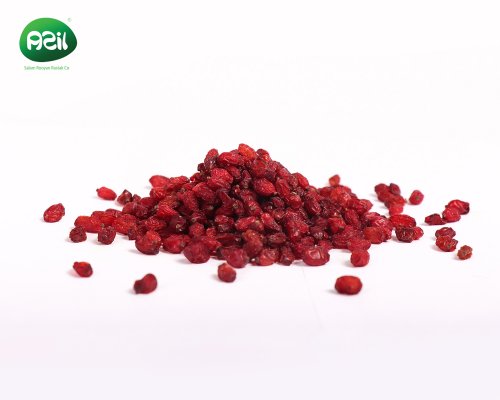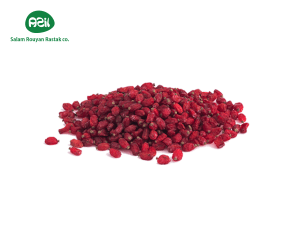Persian Barberries in Festivals and Joy
Persian barberries, with their ruby-red tang, bring joy to Iran’s festivals and celebrations. Known as “zereshk,” these tart gems shine in dishes like zereshk polo at gatherings. For example, they’re a staple on Nowruz tables for renewal. This article explores how Persian barberries star in festivities, their cultural meaning, and health perks. Plus, we’ll look at their harvesting, preparation, and global charm. As exporters of saffron, nuts, and more, we share Iran’s finest barberries too. So, discover why Persian barberries light up celebrations, how they’re used in festive meals, and why they’re loved worldwide. Join us to uncover this tangy delight and see what makes these tart gems a festival favorite!
Introduction
Persian barberries bring a burst of tangy joy to Iran’s festivals and celebrations. These ruby-red delights, known as “zereshk,” grow in Iran’s dry regions and add a tart zing to every gathering. They’re a festive must in dishes and traditions across the country. We export saffron, nuts, and dates, including these barberries, but this isn’t just about trade—it’s about their festive role. This article covers how Persian barberries are used in celebrations, their cultural meaning, and their health benefits. Let’s dive into this tangy treasure!
Persian Barberries in Nowruz Festivitie
Persian barberries sparkle during Nowruz, Iran’s New Year celebration. They’re sprinkled on zereshk polo, a rice dish with saffron, for the haft-sin table to welcome spring. For example, their red color symbolizes renewal and energy, a perfect fit for the season. Families also mix these tart gems into desserts for a sweet-tart balance. This tradition dates back centuries, tying Persian barberries to spring’s joy. So, they’re a Nowruz essential.
Zereshk in Persian Wedding Celebrations
These tart delights shine at weddings too. For instance, Persian barberries are added to rice dishes for the couple’s first meal, wishing them a vibrant life together. In some regions, they’re mixed with sugar and shared with guests to taste joy. Also, their red hue matches the festive decor, adding a pop of color. Another role? They’re gifted in baskets for luck, a sweet tradition. So, zereshk bring love and cheer to weddings.
How These Tart Gems Are Harvested
Harvesting Persian barberries is a careful task to ensure they’re ready for festive use. Here’s how it works:
- Growing: Bushes bloom in spring, berries ripen by fall.
- Picking: Hands pluck them gently to avoid thorns.
- Sorting: They’re cleaned to remove leaves and stems.
- Drying: Berries dry in shade to keep their bright color.
- Packing: Finally, they’re ready for festive dishes.
This process ensures that these tart gems are fresh and tangy for celebrations like Nowruz or weddings.
Preparing Persian Barberries for Festive Dishes
Persian barberries need special prep to shine in festive meals. For example, they’re soaked in water to plump up before cooking zereshk polo for Nowruz. Then, they’re sautéed with butter and sugar to balance their tang in rice dishes. Also, some grind these berries into jams for pastries served at weddings. Another way? Sprinkle them raw on sweets for a tart kick at Yalda Night. Because of this, Persian barberries are a festive kitchen star.
Health Benefits of These Tart Gems
These berries aren’t just tasty—they’re healthy too, making them perfect for festival feasting. For instance, Persian barberries are rich in vitamin C, boosting immunity during gatherings. They’ve got antioxidants to fight stress from busy celebrations. Plus, their fiber aids digestion after big meals, a relief at events. Another perk? They may balance blood sugar, per studies, keeping energy steady. So, these tart gems add wellness to every festive bite.
Cultural Meaning of Zereshk in Festivities
Persian barberries carry deep cultural meaning in Iran’s celebrations. For example, their red color symbolizes life and energy in Persian folklore, a fitting touch for festivals. They’re shared at Yalda Night, the longest night, for warmth and togetherness. Also, old tales say zereshk bring health to feast-goers, a belief still held today. Another tradition? Toss them in rice for unity at community events. So, these berries weave cultural joy into every gathering.
Barberries and Iran’s Festive Life
Zereshk shape Iran’s festive atmosphere in a big way. They support farmers in Khorasan, who supply Persian barberries for holidays like Nowruz. Since they grow in tough, dry lands, they’re a reliable crop for festive seasons. They also fill bazaars with color before celebrations, drawing crowds. We export saffron, nuts, and these tart delights, tying them to Persian joy. So, these berries are a festival lifeline in Iran.
Global Charm of Persian Barberries
People outside Iran love Persian barberries at their own festivities too. Why? First, they add a tangy twist to holiday dishes, perfect for global celebrations. Next, they’re used in recipes for Thanksgiving or Christmas, adding a Persian touch. Also, these tart gems are sold dried in international markets for easy use. For instance, chefs mix them into festive salads or desserts. Iran shares these berries with the world, spreading their charm far and wide.
Challenges with Using These Berries
Using zereshk for celebrations can be tricky. For example, drought in Khorasan cuts harvests before festivals, limiting supply. Then, thorns make picking slow, a challenge for big events like weddings. Plus, drying Persian barberries correctly takes skill to keep their tang for dishes. However, Iran works hard to ensure these tart delights are ready for festive moments.
Opportunities to Share Festive Zereshk
There’s room to grow with these festive berries. For instance, festive kits with Persian barberries could sell big globally for holidays. Also, making barberry sauces for holiday meals is a smart idea for global markets. Another way? Sell zereshk online for international festivities, reaching more homes. We’re all in on sharing these treasures for celebrations. So, these berries have a festive future ahead.
How to Choose the Best Persian Barberries
Want great zereshk for your celebrations? Here’s what to check:
- Feel: They should be dry, not sticky, for easy use.
- Look: Bright red means they’re fresh and festive-ready.
- Taste: Tart with a hint of sweet is best for dishes.
- Source: Get them from us—we ensure quality for your events!
This way, you enjoy top Persian barberries for every festival, from Nowruz to Yalda.
Barberries in Global Festivities
These tart delights flavor celebrations beyond Iran. In Iran, Persian barberries are in Nowruz polo and Yalda snacks, adding tang. In Europe, they’re in holiday stuffing or sauces for Christmas feasts. In Asia, folks add zereshk to festive rice dishes for lunar celebrations. For example, you can sprinkle them on cakes for a tart twist. Because of this, these berries bring joy to global festivities.
The Future of Persian Barberries in Celebrations
The future looks bright for these tart gems in festive settings. New farming methods can fight drought, ensuring steady supplies for holidays. Also, people love tangy, festive foods like Persian barberries for their events. We’re ready to share awesome barberries, saffron, and more for celebrations. So, these delights will remain a festival favorite for years to come.
Conclusion
Persian barberries mix tart flavor with festive joy in Iran and beyond. People love their taste, cultural meaning, and health perks in celebrations like Nowruz and weddings. If you’re planning a gathering, these tart gems call you to add a Persian touch. We send Iran’s best with care. Want some? Contact us to try Persian barberries for your next event. Let’s share this tangy joy together!


